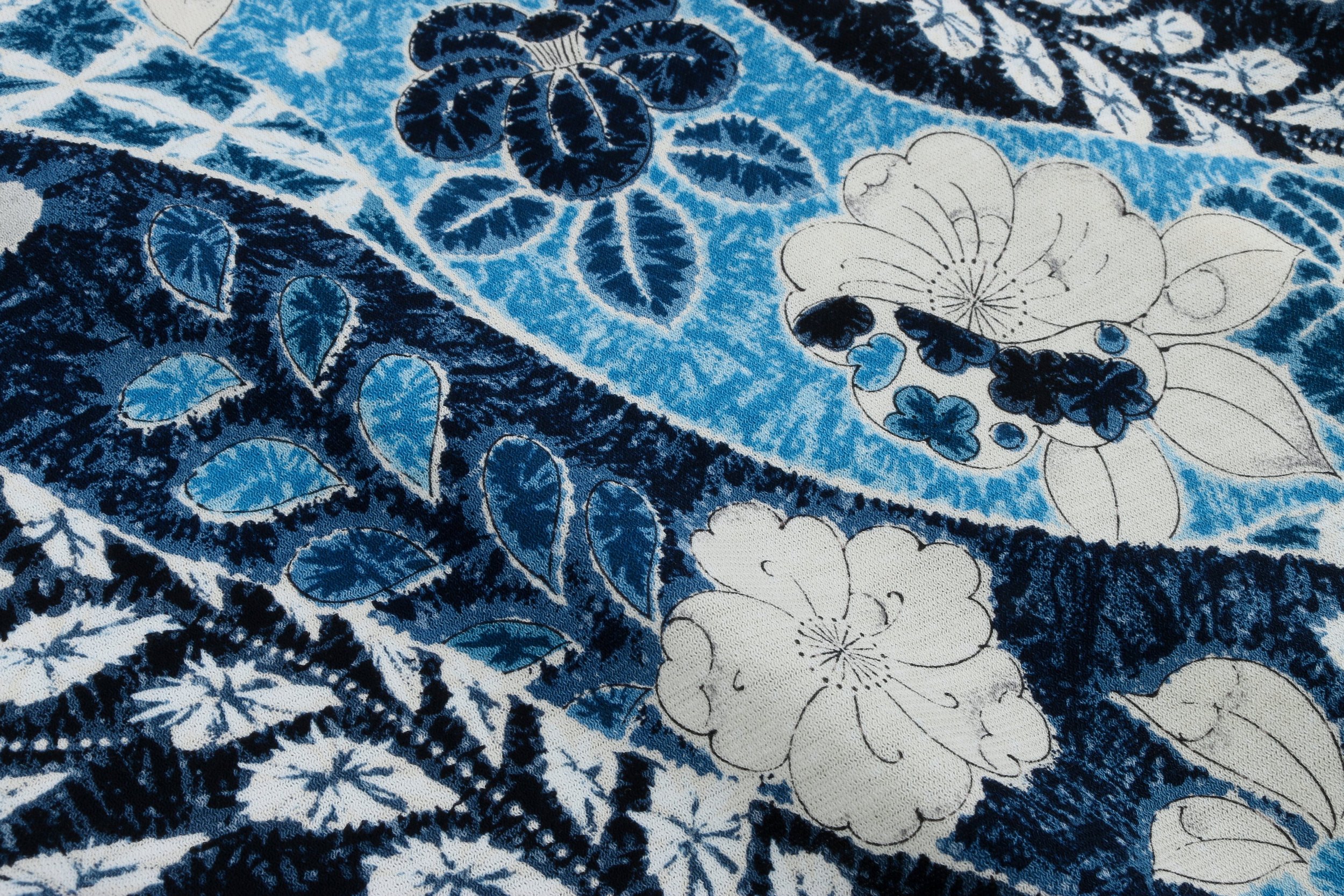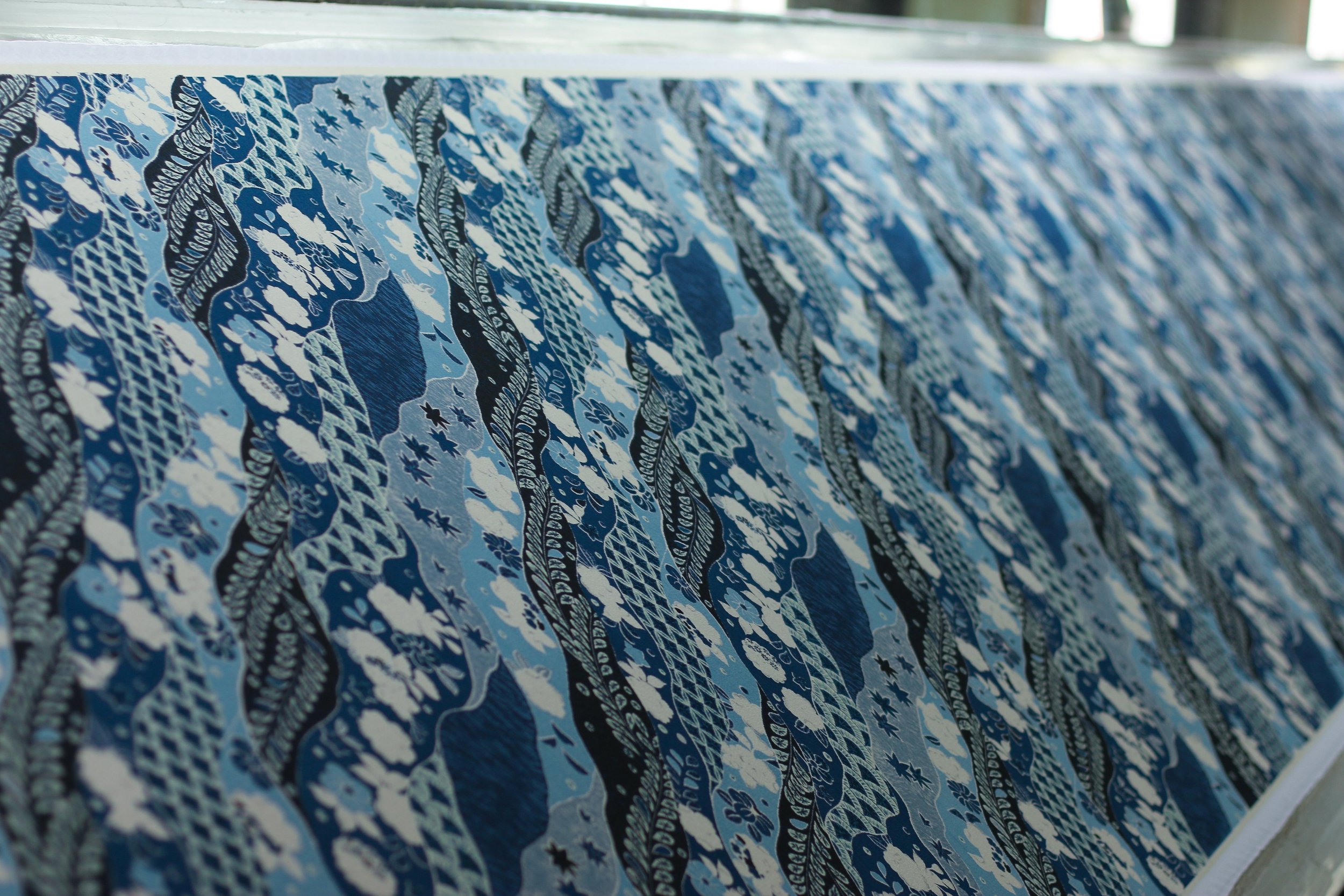Tsuji Ga Hana
“Tsuji ga hana” is a type of traditional patterning, known to be the oldest dyeing method from the Nara-era (710-794), and its beauty is described in detail in 15th century Japanese literature. The dye process consists of making tiny stitches which are pulled within a pattern and then dyed in sections.
In the form of luxurious kimono, tsuji ga hana was often dyed purple, red, or deep indigo, and further embellished with the addition of real gold leaf and embroidery. It is not clearly known who invented it or why it was called tsujigahana, which literally translates to “flowers at the crossroads”.
Textile artist Itchiku Kubota (1917-2003) at the age of 20, first saw a fragment of tsuji ga hana at the Tokyo National Museum. He decided he would devote his career to re-creating the method, and since there were no surviving instructions explaining how it was produced, was forced to experiment on his own for decades.
In 1977, substituting a contemporary silk crepe fabric called “chirimen”, for the ancient “nerinuki”, which was no longer being woven, and synthetic dyes for natural dyes, Kubota, at 60 years old displayed his kimono for the first time in an exhibition in Tokyo. He also had an exhibit at the Smithsonian Museum in Washington D.C. for six months in 1995. At the time of his death, Kubota had completed 40 of his projected 80 kimono for a series he entitled “Symphony of Light”. Kubota’s son and daughter continue their father’s work at the artist’s studio, Ichiku Kobo in Tokyo.
At Pagong Kyoto, our artisans have implemented the technique of Kyoto-Yuzen for carrying on the tradition and spirit of tsuji ga hana.



